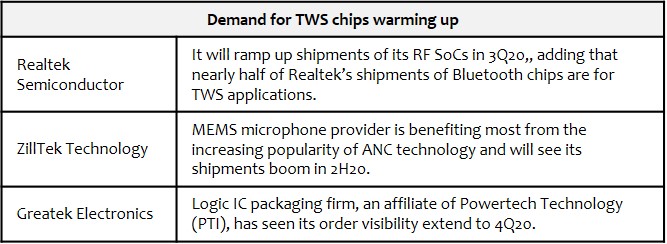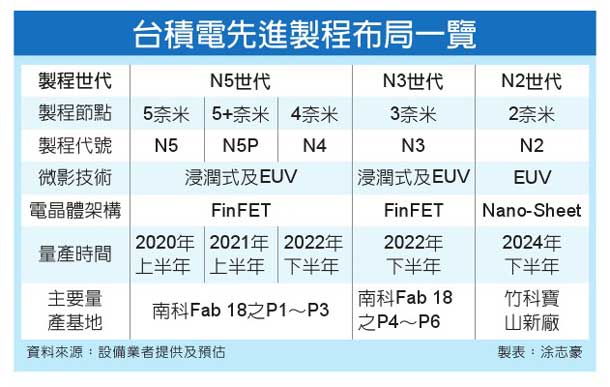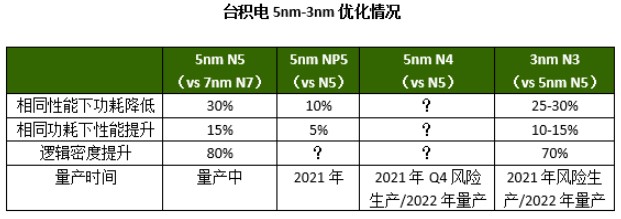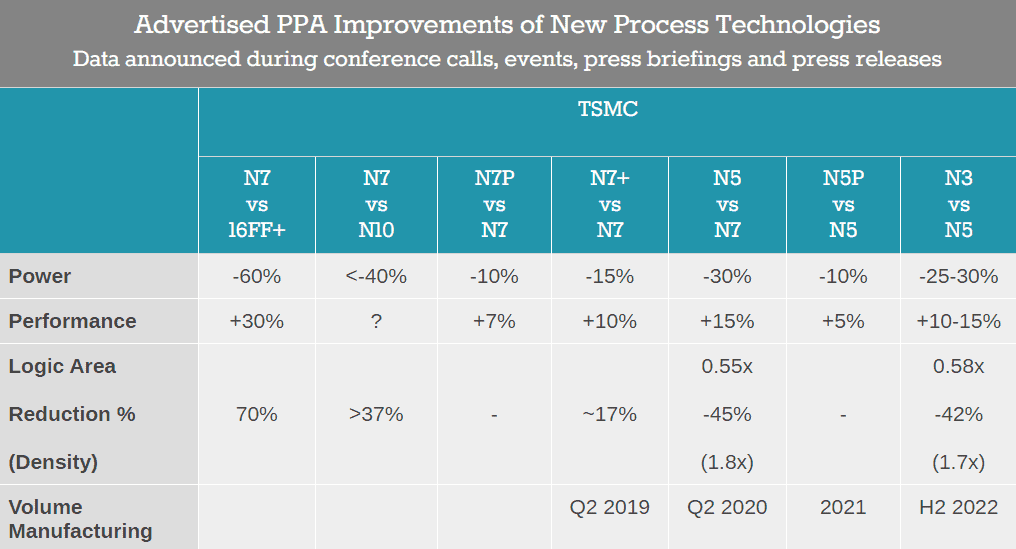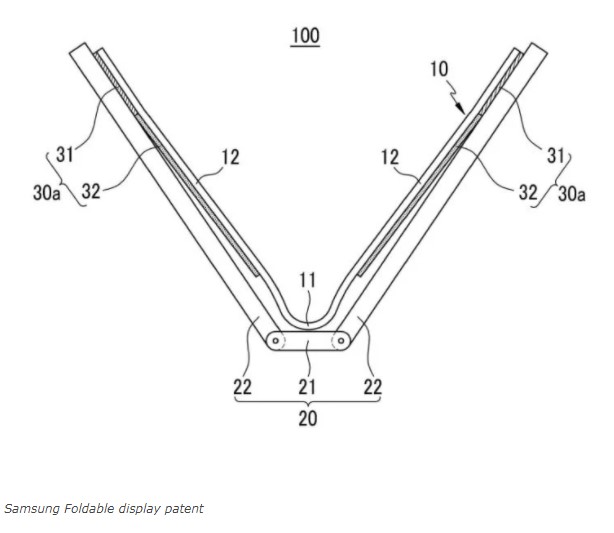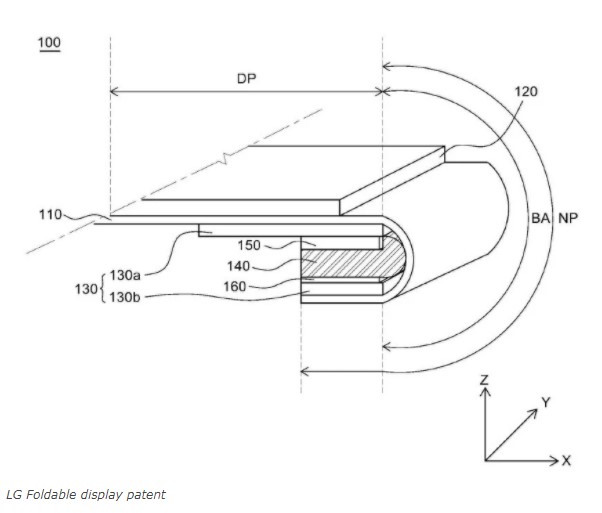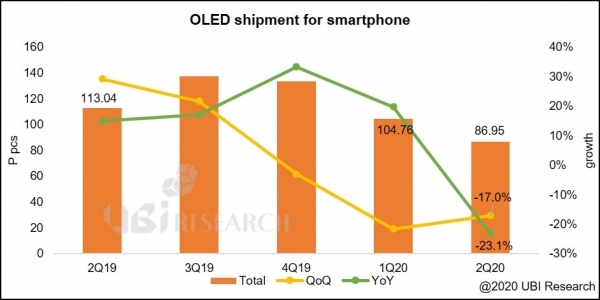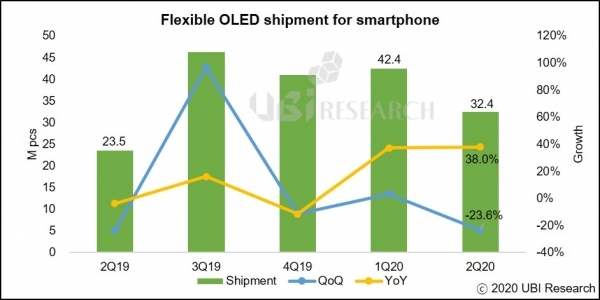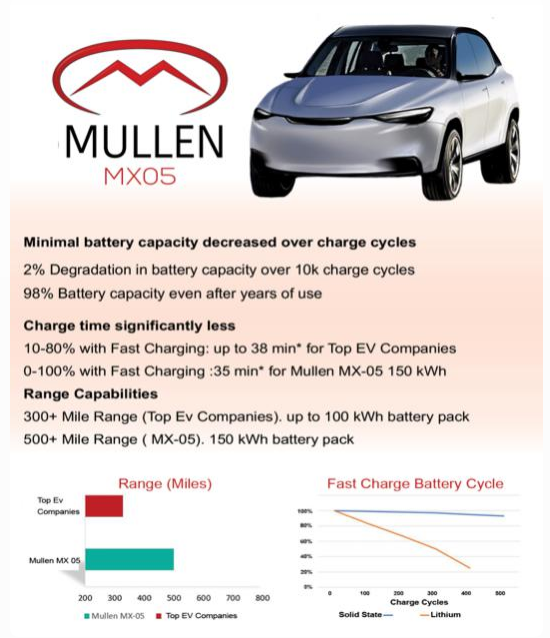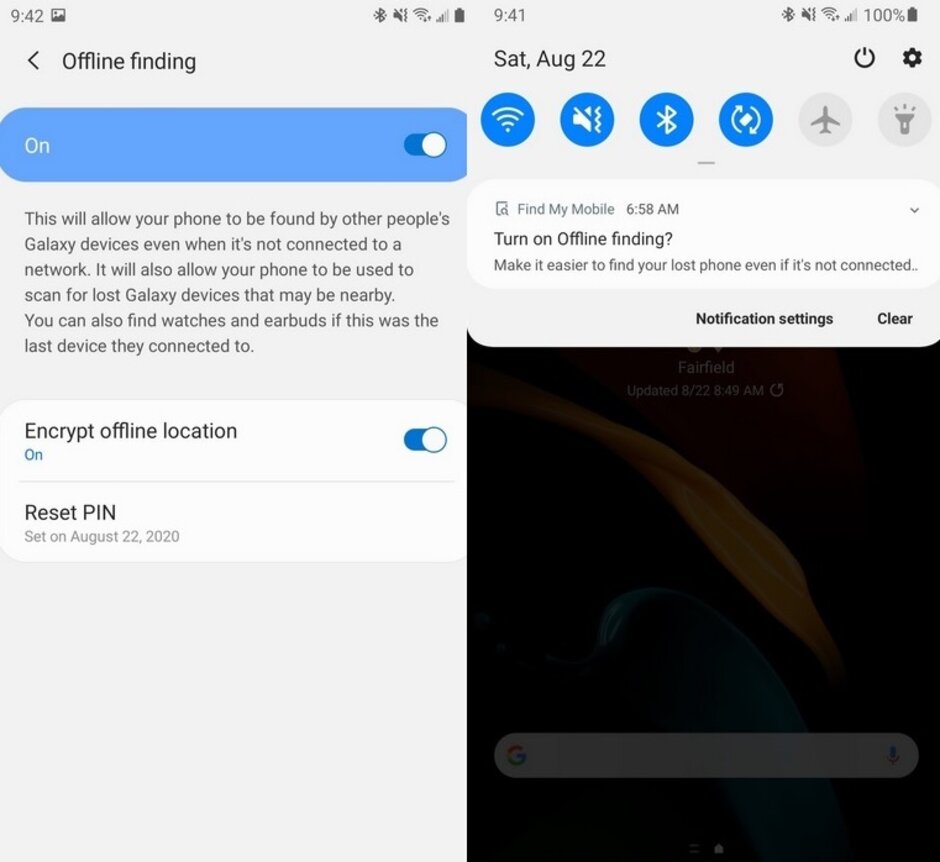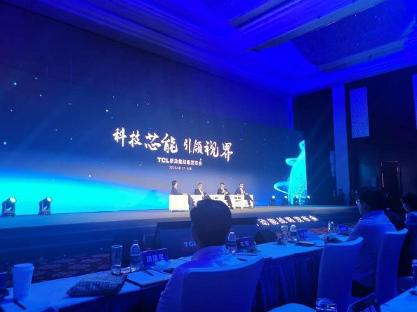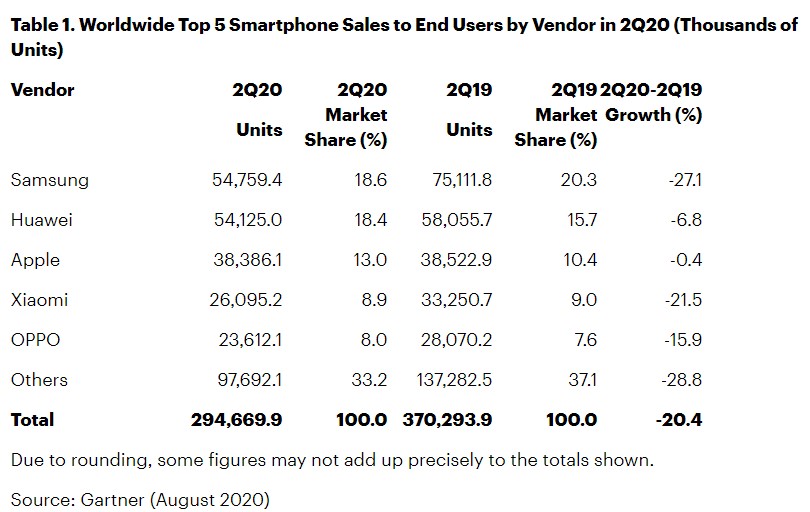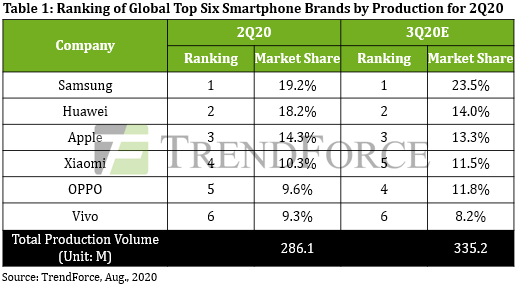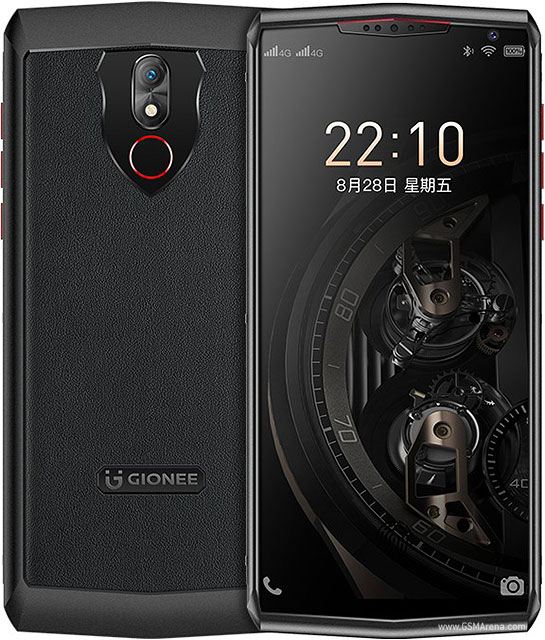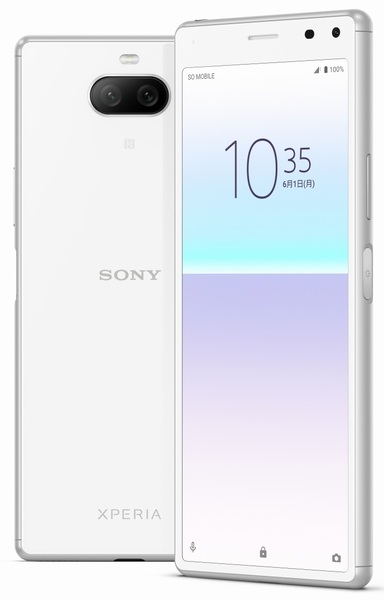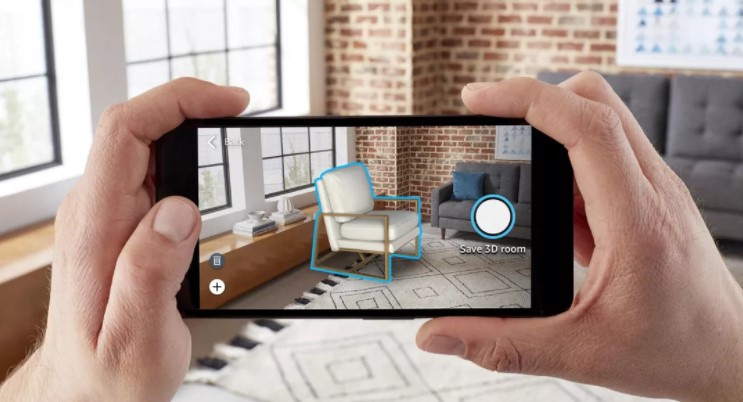
8-26 #Future: TSMC is sharing info of 6nm, 5nm, 4nm, 3nm and 2nm; TCL Technology has announced the launch of a northern headquarters in the city of Tianjin; Foxconn and Pegatron are among companies reportedly eyeing new factories in Mexico; etc.
Demand for chips needed for production of true wireless studio (TWS) devices has rebounded recently, fueled by orders from non-AirPods vendors who have seen a pick-up in sales of TWS products in the end market, according to Digitimes. (Digitimes, press, Gizmo China, Digitimes)
TSMC is already working on setting up its 2nm foundry, starting from building a factory and R&D center. It will employ around 8,000 people and will be an evolution from the 3nm chips that are supposed to arrive in consumer devices by the end of 2022. The senior VP YP Chin has confirmed that TSMC has already purchased land in Hsinchu to expand its research and development center. (GSM Arena, Digitimes, Digitimes, UDN)
TSMC President, Wei Zhejia, has revealed that 7nm shipment hit the milestone of 1B units. The company is now accelerating the mass production of the 5nm process. The higher version of the 5nm will enter mass-production in 2021. However, TSMC’s 3nm process will be in mass production by 2H22. TSMC’s 5nm is currently accelerating mass production at its fab 18. As for the 3nm trial production, it will commence in 2021. (GizChina, AnandTech, My Drivers)
TSMC has officially confirmed that its 5nm and 6nm processes are already in mass production. In addition, the company also announced that it will release a higher version of the 5nm process in 2021. Furthermore, TSMC has officially confirmed that more advanced 3nm and 4nm is in development. As for the 4nm process, it is an ultimate improvement of 5nm. However, the 3nm process is the natural successor to the 5nm process. (GizChina, My Drivers)
LG Display (LGD) and Samsung Display (SDC) are reportedly advancing their foldable display technology. LGD has applied for a patent for a ‘flexible display manufacturing method’, which is a technology that minimizes wrinkles that occur when a foldable display substrate is bent repeatedly. The purpose is to increase durability by reducing the stress applied while the substrate is deformed. SDC has applied for a patent for a ‘foldable display design’ which utilizes a new display manufacturing technology for foldable displays. Like LG Display, the purpose is to prevent panel damage by reducing the bending stress that occurs when the foldable substrate is deformed. (ET News, Gizmo China)
According to UBI Research, the shipment of OLED panels for smartphone nosedived in 2Q20 to 87M units. It is a fall of 23.1% from the same time period a year ago and a drop of 17% from 1Q20. The shipment decline came from low shipment of rigid OLED panels. Shipment for rigid OLED panels dropped 40.3% year over year in 2Q20. Yet this was offset somewhat by the rise in flexible OLED panel shipment which grew 38% from a year prior. (The Elec, Gizmo China)
Xiaomi has patented a novel movable camera system for future smartphones. The patent concerns a dual-camera array. Both cameras are bolted onto a movable plate that can change the cameras’ viewing angles. In one use case, the cameras can pivot to widen their field of view. The two shots can then be stitched together creating a wider-angle image. (Gizmo China, LetsGoDigital, Android Authority, OfWeek, Sohu)
Mullen Technologies, an emerging electric vehicle (EV) manufacturer and technology company, has announced results from the independent testing of its licensed solid-state polymer battery technology undertaken by EV Grid, an independent lab based in San Dimas, California. The results provided support that the Company’s licensed battery technology may be capable of enabling an electric vehicle to travel 640 miles at a cruising speed of 55mph on a flat surface, and 550 miles at a cruising speed of 75mph, which could allow for significantly longer driving distances on a single charge than commercially available lithium batteries offer today. (My Drivers, Yahoo)
Paul Scanlan, Huawei’s CTO, has revealed that 5G is a transformational platform. This network is better than 4G, 3G, or 2G but at first glance, they are way cheaper. The reason why other networks seem cheap is that they have little or nothing to do with speed and delay. Paul has said that the capacity of 5G is 20~30 times that of 4G, 10,000 times that of 2G. With the 5G network, power consumption is reduced by 10 times, and volume is reduced by 70%. (GizChina, Semiconductor Engineering)
Samsung has added a new feature to Find My Mobile; the new feature depends on other Galaxy owners to help find the missing device. The added “offline tracking” is enabled by going to the ‘Offline finding’ page and toggling on the switch at the top of the page. (Phone Arena, Twitter)
Based in the southern city of Huizhou not far from Shenzhen, TCL Technology has announced the launch of a northern headquarters in the city of Tianjin. The move follows TCL’s Jun 2020 announcement that it would purchase Zhonghuan Electronics Information Group for CNY11B (USD1.6B). In the future, it will focus on Tianjin to develop the business in the north, and the acquired Zhonghuan Group will become the bearer of the north headquarters business. (Laoyaoba, Yicai, Digitimes, Caixing Global)
Apple’s South Korean unit has proposed measures to address antitrust concerns and offered to provide KRW100B (USD84.02M) worth of support programs for small businesses, consumers and others. Apple has reportedly pledged to offer KRW40B (USD34M) to build a center to support research and development for Korea’s small manufacturers and KRW25B (USD21M) to establish an “academy” to provide education to developers. (Mac Rumors, Reuters, Sina, CN Beta)
Apple has confirmed plans to locally manufacture the iPhone SE in India. Making the iPhone SE locally allows Apple to skirt the 20% import tax on foreign-made smartphones. Apple supply chain partner Wistron is set to produce the iPhone SE at a plant near Bengaluru, where the company already produces the iPhone 7. Foxconn has an assembling unit in Chennai, where it assembles iPhone XR and iPhone 11. (Times of India, Apple Insider, CN Beta)
The COVID-19 pandemic continued to impact the global mobile phone industry, as worldwide sales of smartphones to end users totaled 295M units, a decline of 20.4% in 2Q20, according to Gartner. Among the top 5 smartphone vendors, Samsung experienced the largest decline in sales while Apple’s smartphone sales were nearly flat year-over-year. Although Huawei also declined in smartphone sales year-over-year, it experienced 27.4% growth, quarter-over-quarter, moving it into a virtual tie with Samsung for the No.1 position. (Android Authority, CN Beta, Gartner)
The COVID-19 pandemic has compelled governments worldwide to impose border closures and regional lockdowns, which led to significant declines in various countries’ GDPs this year. As economic and social activities around the world have stagnated, the performance of the smartphone industry was severely damaged in 2Q20. According to TrendForce, total smartphone production reached 286M units in 2Q20, a slight QoQ rebound of 2.2%, but a 16.7% decrease YoY, which is the largest quarterly YoY drop in history. (GizChina, GSM Arena, TrendForce, TrendForce)
Foxconn and Pegatron are among companies reportedly eyeing new factories in Mexico, as the U.S.-China trade war and coronavirus pandemic prompt firms to reexamine global supply chains. Foxconn has plans to use the factory to make Apple iPhones. Foxconn has 5 factories in Mexico mainly making televisions and servers. (The Verge, Reuters, CN Beta)
LG Q52 5G is announced in South Korea – 6.67” 1080×2400 FHD+ IPS HiD, Qualcomm Snapdragon 765G, rear quad 48MP-8MP ultrawide-2MP macro-5MP depth + front 32MP, 6+128GB, Android 10.0, side fingerprint scanner, 4000mAh 15W, KRW499K (USD420). (GSM Arena, NDTV, Android Community)
Moto G9 is announced in India – 6.5” 720×1600 HD+ IPS u-notch, Qualcomm Snapdragon 662, rear tri 48MP-2MP macro-2MP depth + front 8MP, 4+64GB, Android 10.0, rear fingerprint scanner, 5000mAh 20W, INR11,499 (USD155). (GSM Arena, Android Headlines, Motorola India)
Gionee K30 Pro is announced in China – 6.53” 720×1600 HD+ IPS u-notch, MediaTek Helio P60, rear 16MP main camera + front 13MP, 6+128 / 8+128GB, Android 9.0, rear fingerprint scanner, 4000mAh 10W, CNY699 (USD101) / CNY799 (USD116). (Tech Androids, Gizmo China, JD.com)
Gionee M30 is announced in China – 6.0” 720×1440 HD+ IPS, MediaTek Helio P60, rear 16MP + front 8MP, 8+128GB, Android 10.0, rear fingerprint scanner, 10,000mAh 25W (8.4mm thick), reverse charging, CNY1,399 (USD202). (CN Beta, GSM Arena)
Gionee Max is announced in India – 6.088” 720×1560 HD+ IPS u-notch, Unisoc SC9863A, rear dual 13MP-0.3MP depth + front 5MP, 2+32GB, Android 10.0, no fingerprint scanner, 5000mAh, INR5,999 (USD80). (Gizmo China, GizChina, Flipkart, GSM Arena)
OPPO A53 is launched in India – 6.517” 720×1600 HD+ IPS HiD, Qualcomm Snapdragon 460, rear tri 13MP-2MP macro-2MP depth + front 16MP, 4+64 / 6+128GB, Android 10.0, rear fingerprint scanner, 5000mAh 18W, INR12,990 (USD175) / INR15,490 (USD210). (GSM Arena, OPPO, Flipkart)
HMD Global is launching Nokia 5.3 in India – 6.55” 720×1600 HD+ IPS u-notch, Qualcomm Snapdragon 665, rear quad 13MP-5MP ultrawide-2MP macro-2MP depth + front 8MP, 4+64 / 6+64GB, Android 10.0, rear fingerprint scanner, 4000mAh 10W, INR13,999 (USD188) / INR15,499 (USD208). (GSM Arena, CN Beta, Nokia, NDTV)
HMD Global is launching Nokia C3 in India – 5.99” 720×1440 HD+ no-notch, Unisoc SC9863A, rear 8MP + front 5MP, 2+16 / 3+32GB, Android 10.0, rear fingerprint scanner, 3040mAh, INR7,499 (USD101) / INR8,999 (USD121). (GSM Arena, CN Beta, Nokia, NDTV)
Sony Xperia 8 Lite is launched in Japan – 6.0” 1080×2520 FHD+ 21:9 IPS, Qualcomm Snapdragon 630, rear dual 12MP-8MP 2x telephoto + front 8MP, 4+64GB, Android 9.0, side fingerprint scanner, IP5X/58 rated, 2870mAh 18W, JPY29,800 (USD280). (GSM Arena, Sony, CN Beta)、
Amazon is rolling out a new augmented reality (AR) shopping tool, Room Decorator, that will allow user to see furniture and other home décor in user’s own space. The feature is available across thousands of furniture products available on Amazon, including those offered both by Amazon and some of its third-party sellers. (TechCrunch, CN Beta, CNET)

